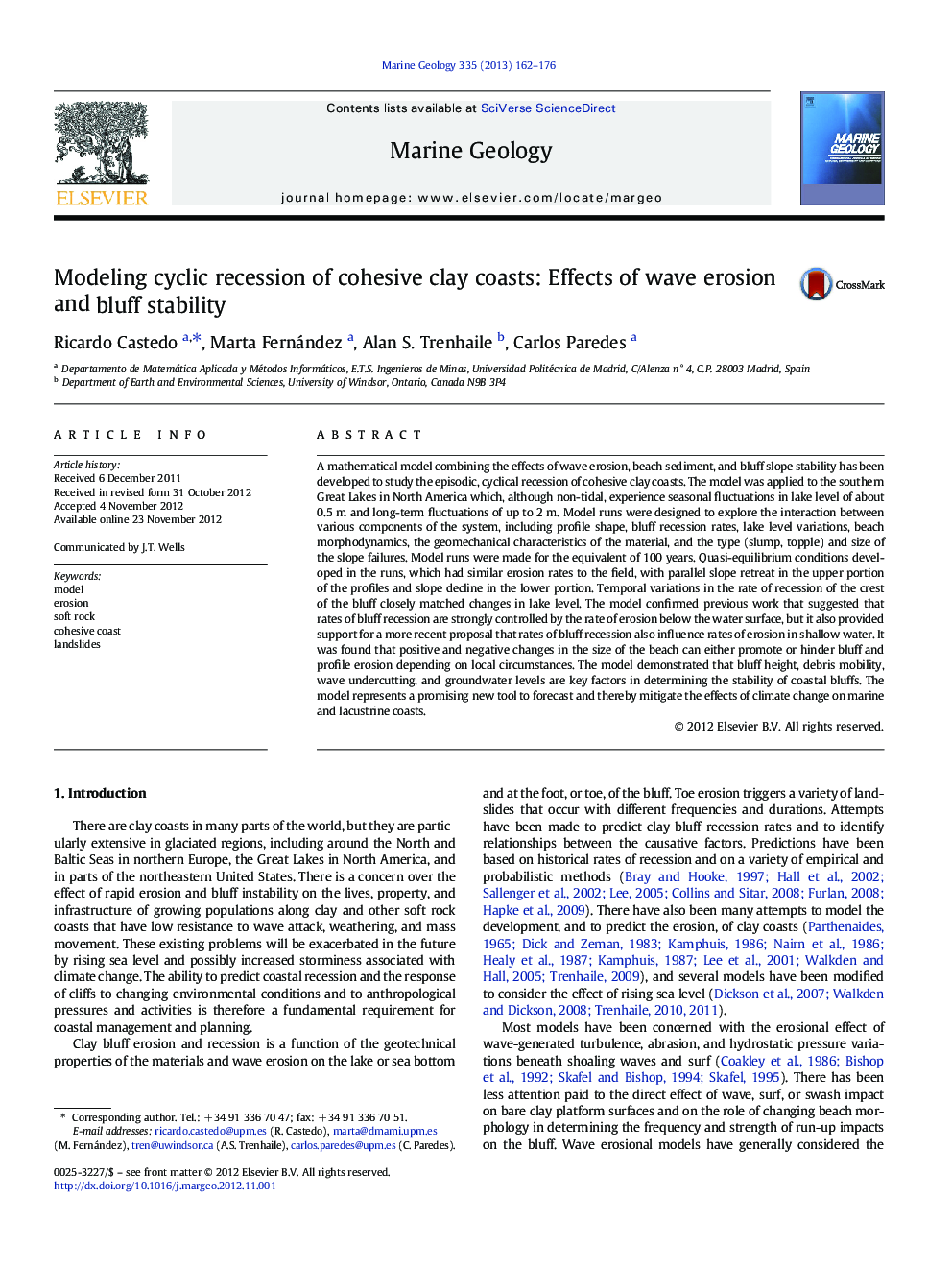| Article ID | Journal | Published Year | Pages | File Type |
|---|---|---|---|---|
| 4718508 | Marine Geology | 2013 | 15 Pages |
A mathematical model combining the effects of wave erosion, beach sediment, and bluff slope stability has been developed to study the episodic, cyclical recession of cohesive clay coasts. The model was applied to the southern Great Lakes in North America which, although non-tidal, experience seasonal fluctuations in lake level of about 0.5 m and long-term fluctuations of up to 2 m. Model runs were designed to explore the interaction between various components of the system, including profile shape, bluff recession rates, lake level variations, beach morphodynamics, the geomechanical characteristics of the material, and the type (slump, topple) and size of the slope failures. Model runs were made for the equivalent of 100 years. Quasi-equilibrium conditions developed in the runs, which had similar erosion rates to the field, with parallel slope retreat in the upper portion of the profiles and slope decline in the lower portion. Temporal variations in the rate of recession of the crest of the bluff closely matched changes in lake level. The model confirmed previous work that suggested that rates of bluff recession are strongly controlled by the rate of erosion below the water surface, but it also provided support for a more recent proposal that rates of bluff recession also influence rates of erosion in shallow water. It was found that positive and negative changes in the size of the beach can either promote or hinder bluff and profile erosion depending on local circumstances. The model demonstrated that bluff height, debris mobility, wave undercutting, and groundwater levels are key factors in determining the stability of coastal bluffs. The model represents a promising new tool to forecast and thereby mitigate the effects of climate change on marine and lacustrine coasts.
► New mathematical model to predict and study clay coast development ► First to combine wave erosion, beach morphodynamics, and slope stability ► Model replicates profile morphology, erosion rates, and modes of slope failure. ► Promising new tool to forecast climate change effects on clay coasts
